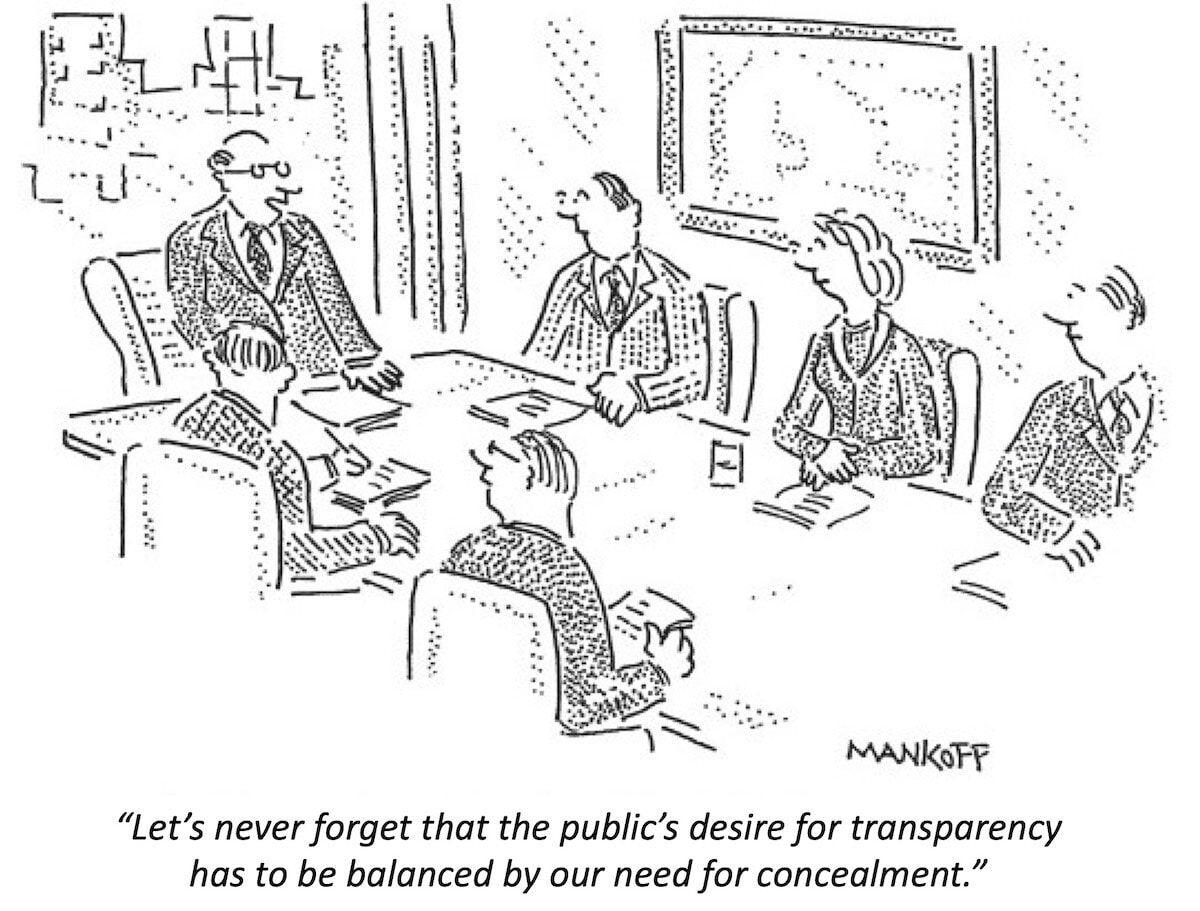How The Pandemic Has Changed & Refocused Board Efforts
(Originally appeared in the November 18th, 2020 ‘Across the Board’ publication, a Board Director, Board Advisor, C-Level, and Business Leader publication reaching 26,500+ exceptional business leaders in over 70 countries with articles focused on leadership, strategy, and governance topics – sign up here)
COVID-19 has affected just about every aspect of personal and professional lives around the world. This is also true in the world’s boardrooms. Boards of Directors have not been immune to the pandemic’s effects, experiencing additional risk components spread across entire corporate landscapes and dominating most strategic and governance discussions. The sheer size and number of challenges are immense for many Boards, with unintended knock-on effects adding more stress. All of these rapid-fire arrows have rendered countless Boards in a highly reactive mode, with certain trends emerging.
Let’s first look at why these feelings of overloading are occurring in boardrooms. Sure, it could be simply attributed to the incredible increase of urgent focus areas requiring a Board’s involvement …but there is a more explicative psychological theory behind it. This is where Cognitive Load Theory (CLT) comes into play. CLT shows that our minds work in one of two channels when confronting a problem. The first channel, when confronted with a known challenge, especially in an area where you have deep expertise, is where your long-term memory kicks in, helping you complete the task without much stress or strain. It is familiar. You have dealt with it before. The second channel, when confronted with an unknown or unfamiliar challenge, forces us to leverage our ‘working memory,’ which is proven to be limited in its capacity and duration for holding information. There is no reference point. It is new. The less familiar a challenge is, the more ‘working memory’ is utilized to solve the issue, thus making the solution more difficult. Recognizing which territory your brain (and your Board) are operating in is important to ensure effectiveness and efficiency. Needless to say, there is a lot of ‘working memory’ being applied in boardrooms currently.
Whether or not our brains’ circuit boards have been collectively overloaded or not, there have been some very obvious pivots in the boardroom. There are 7 clearly prevalent refocus areas in the boardroom, witnessed first-hand by way of my pandemic Board Consulting & Board Advisory work over the past 9 months. Some of these I consider to be major developments in an industry arguably accused of snail-paced change.
- Not Just Strategic Support & Governance Anymore: Pressures within business environments had already been steadily increasing for years, however, COVID-19 put the anxiety level into hyperdrive. In addition to the common and expected barrage of every-day challenges faced by organizations, the pandemic forced what would normally have been multiple lesser ‘days of reckoning’ essentially into one colossal event. Most Boards quickly encountered the overload of what I have nicknamed ‘governance simultaneity,’ the increased and complicated inter-relationship of required decision-making in times of crisis, many times within a highly restricted time period. Whether Boards realized it or not at the start, this is exactly what the pandemic initiated. The emotional toll on Boards, as well as CEOs, was and continues to be immense. In addition to dealing with their own emotional distress, many Boards were forced into the realm of acting as the emotional support arm for their CEOs, as well. For some CEOs, as I have personally witnessed, this new channel of discussion has formed a much needed deeper bond between the CEO and their Board. For most Board Directors, this has become an added duty not originally in their role description, but nonetheless extremely important. Boards with high Emotional Intelligence (EQ) and Mindfulness Intelligence (MQ) fared much better during these times and were able to truly provide well-rounded support (for more on the EQ and MQ topic as it relates to Boards, see Chapter 13 in my book).
- Time Allocation: Crises have an uncanny way of requiring more time from Board Directors. In most cases, much more time. This increased time commitment is part and parcel of their obligation to the duty of care, duty of loyalty, and duty of obedience commonly referenced as the Board Director’s credo. The COVID-19 pandemic, as seen in numerous early studies, has shown a sharp increase in the amount of time expended by Board Directors in their quest to mitigate risks through their strategic and governance involvement. Some Board Directors, and Boards, have found themselves in the predicament of ‘overboarding,’ essentially lacking the time to attend to the increased needs of the crisis across numerous served Boards. “What makes COVID-19 different than most other encountered risks is the potential ongoing duration,” states Michele Kythe Lim, President / CEO of Institute of Corporate Directors Malaysia (ICDM), the host of PowerTalk. “Most Boards have level set the expectation that Board Member time commitments must remain increased for the foreseeable future.” As the old saying goes, ‘nothing is more permanent than a temporary solution’ could have measurable long-term effects for future Board yearly time expectations.

- A New Age of Transparency?: With COVID-19 continuing to rage on, transparency has been an increasing demand of both shareholders and stakeholders in an effort to gain an understanding of how (and if) the organization is prepared to weather the effects of a major risk such as a pandemic, what they are currently doing, and where they plan on going. These seem like simple questions to answer, but for many organizations they are not. Did the Board have current and referenceable risk mitigation plans in place for major crises? Where are the major risks and critical path in the supply chain and are there alternates? What and when should we be communicating to our employees, shareholders, and stakeholders? In an effort to ensure employee and customer safety and wellbeing, has there been a shift from shareholder primacy to multi-stakeholder focus? These questions, as well as the forum for communication, have become commonplace in boardrooms following the break of the pandemic. For Boards with a history of glossophobia (fear of public speaking), the path to controlling a purposeful narrative was much bumpier than for those previously embracing deeper transparency.
- Risk & Scenario Planning: A high percentage of Boards spend little or no time on scenario planning as a proactive way to mitigate risk. This is a big mistake. Although it would have been a stroke of genius to have a detailed plan in case of a worldwide pandemic, those Boards with robust risk & scenario planning activities in place were much more likely to be well-positioned for quick defensive action. The simple act of identifying the largest risks facing the organization and working through responses to minimize impact would have touched on many of the actual ramifications caused by the pandemic. For many organizations, the core components of risk management strategy have become front and center in many boardrooms.

- Forced Digital Transformation: In addition to all of the supplemental micro and macro issues requiring the Board’s attention since COVID-19 hit, one particularly pesky creature formerly relegated to the ‘if we have time to discuss’ archive no longer could be put off. Pre-COVID, digital transformation was commonly a topic that was extremely important, but now viewed as urgent. For too many organizations, the pandemic changed this overnight, layering in an extremely challenging and costly project alongside countless other immediate focus areas. Avoiding this parallel initiative would have rendered a large amount of organizations less than optimal, or even unable, to support a remote workforce. Boards are quickly realizing that important, yet complicated projects may have shorter implementation windows than previously believed, requiring better governance control and a close relationship on their status.
- Political Conversations: Political conversations used to be a fairly taboo discussion in most boardrooms, more commonly and rightfully related to ‘policy’debates and their potential effects on the industry and organization. However, with recent heightened political polarization seen around the world, many of these discussions have meandered into the territory of ‘affiliated party’ conversations. Due to the uncertain hot-button and derailing ability politics can have on team cohesiveness and camaraderie, Boards would do themselves a great service reverting back to policy discussions rather than party discussions. Truly diverse Boards contain a mix of political beliefs, as they should, but the rest of the organization is solely relying on the Board’s guidance regarding policy topics, not political affiliations. Many Boards are waking up to this risk and helping to guide the conversation in the right direction.
- Effectively & Efficiently Collaborating: Ease and effectiveness of communication have always been the hallmark of great Boards and a major receiver of credit in post-mortem crises evaluations. The COVID-19 pandemic has greatly heightened the need for proper Board communication, and in most cases, the functionality for an entirely remote environment. The implementation, as well as deeper functional usage, of Board Portals during the pandemic has increased, possibly ushering in the age of Board digitization becoming the norm and not simply a nice-to-have. Properly evaluating the correct Board Portal software and service for your organization is important in both right-sizing and ensuring full adoption. Portals offering modularized add-ons are a great way to get early adoption with the ability for expanded services as the Board masters each module’s functionality.
There will undoubtedly be numerous case studies, lessons learned checklists, and risk mitigation write-ups after the pandemic has fully run its nefarious course …but if we have truly learned valuable lessons remains to be seen (i.e. did anyone pull the data from the 1918 Spanish Flu epidemic?). These are only valuable lessons if we learn and apply them in future scenarios. One thing can be certain – the pandemic has likely earned a recurring top spot in the Board’s risk list, something that was unthinkable even one year ago.
This article was first published here.
Photo by Giorgio Trovato on Unsplash.

 5.0
5.0 





















